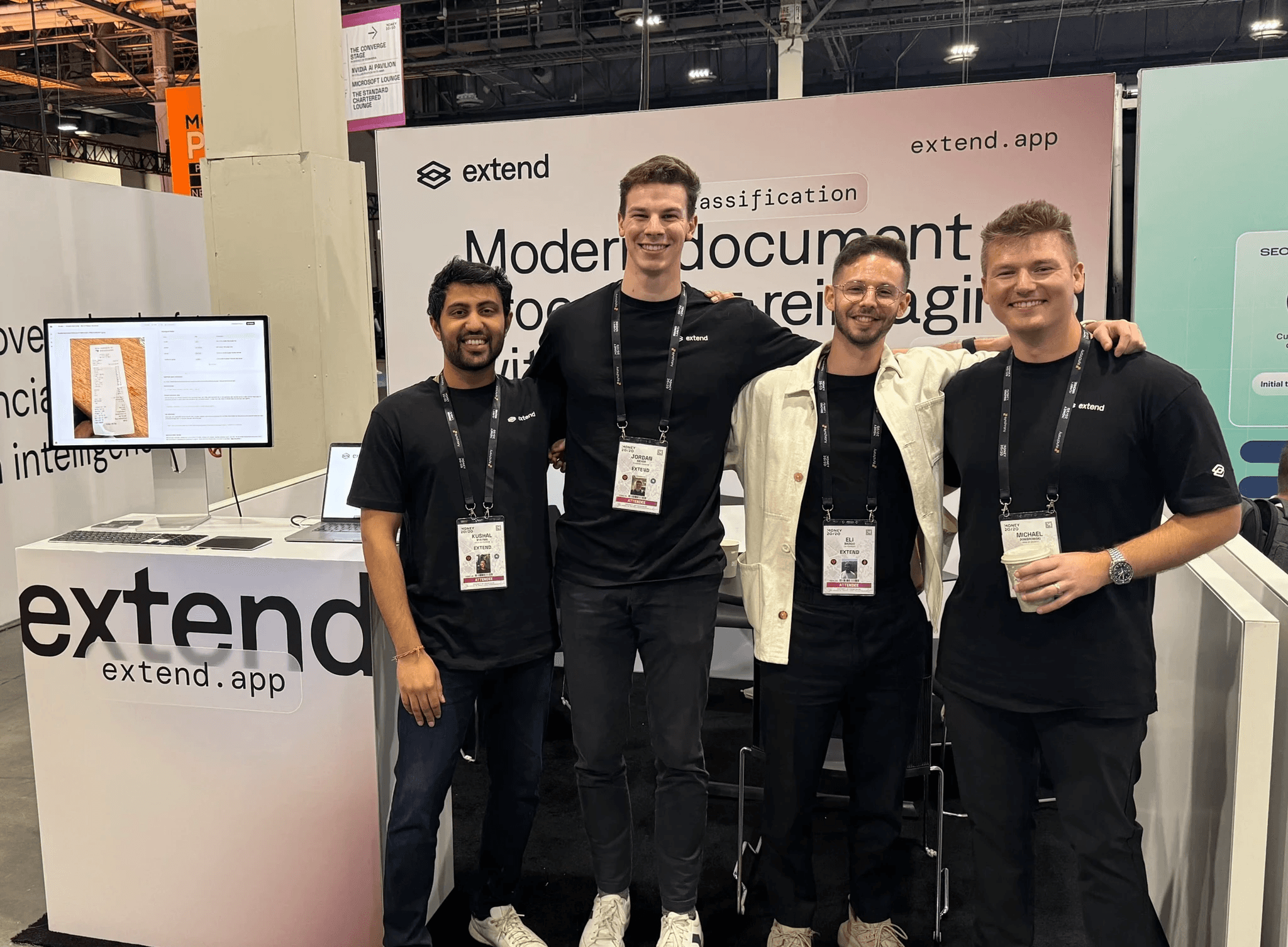3 MIN READ
May 7, 2025
Case Study
Nudge Security Cuts Development Time from 6 Months to Weeks
Kushal Byatnal
Co-founder, CEO
"Extend accelerated our timelines and enabled us to go live in just a few weeks. Building something equivalent in-house would have taken us ~6 months"
— Jaime Blasco, CTO & Co-Founder of Nudge Security
About Nudge Security
Nudge Security is a security platform that helps organizations discover, manage, and secure their SaaS and cloud assets. It focuses on SaaS discovery, third-party risk, and SaaS Security Posture Management (SSPM). Their platform identifies and monitors applications across organizations, enabling teams to manage security risks while optimizing usage and costs.
What Nudge Needed — and Why OCR Didn’t Cut It
As Nudge’s platform matured, customers began pushing for deeper financial insights that went beyond basic app discovery.
“Our customers weren't just asking which apps they had. They wanted to know how many seats they were paying for, how much they were spending, and who was paying for it.”
— Jaime Blasco
That data wasn’t sitting in clean APIs. It was locked in messy, unstructured order forms, contracts, and invoices across thousands of vendors — each with different layouts, languages, and edge cases.
Nudge initially tried solving this in-house using tools like Amazon Textract. It worked for semi-structured PDFs, but quickly crumbled when applied to more complex documents.
“In the case of Textract, there's no real customization at all. Every issue, every edge case requires writing custom code and logic. That approach just doesn't scale when you're dealing with thousands of different vendors and formats.”
— Jaime Blasco
Edge cases kept popping up — mislabeled totals, multiple currencies, multi-page tables — that required custom logic. What started as a “quick” feature turned into a significant infrastructure platform that demanded constant fire-fighting.
The Switch: From DIY Pipelines to Extend
When scoping out continuing to build Textract OCR pipelines in-house, Nudge’s team evaluated building with Extend. Extend offered a full-stack document processing platform: configurable processors, evaluation sets, feedback loops, and all.
“There’s lots of OCR providers out there like Textract, but they’re entirely different tools. I wouldn’t even put it in the same bucket as what you guys are doing.”
— Jaime Blasco
Extend Impact: Rapid Integration
Nudge integrated Extend and had real extraction results in days. Instead of building and maintaining OCR pipelines + code, they got a ready-to-use system with built-in model reasoning, document chunking, and human-in-the-loop workflows.
“If we built this ourselves, it would have taken at least six months to have something usable.”
— Jaime Blasco
Extend Impact: Built for Complexity
Even after launch, Nudge continued to encounter new invoice formats, some unfamiliar and unexpectedly complex. With legacy tooling, each new edge case would require code changes or heuristics. With Extend, handling those edge cases was a matter of updating configurations or field definitions.
“Even today we're finding new edge cases. Extend lets us iterate quickly without having to write new code for every variation we encounter.”
— Jaime Blasco
Extend's configuration UI and evaluation tooling gave the Nudge team the ability to iterate without deep ML expertise. Engineers weren’t bottlenecked on training models or writing regex, but could focus on downstream product logic and user value.
Extend Impact: Engineering Acceleration
By providing a platform that brings the full suite of tooling around extraction, evaluation, and optimization, Extend gave Nudge the same capabilities they would have needed months to build internally, without spinning up a document R&D lab.
“We'd be dealing with two orders of magnitude more complexity – it's essentially building a whole new product.”
— Jaime Blasco

Conclusion
Document data extraction challenges multiply exponentially when scaling from one format to thousands. What would have taken six months of engineering effort became a fast, manageable integration with Extend.
The result: access to a vast new data source, happier customers, faster roadmap velocity, and a document pipeline that continues to improve with time, not degrade.
“Extend helped our team focus on what matters instead of reinventing document processing.”
— Jaime Blasco
WHY EXTEND?




